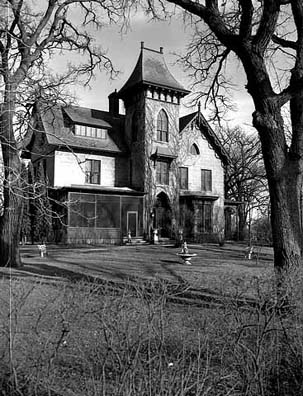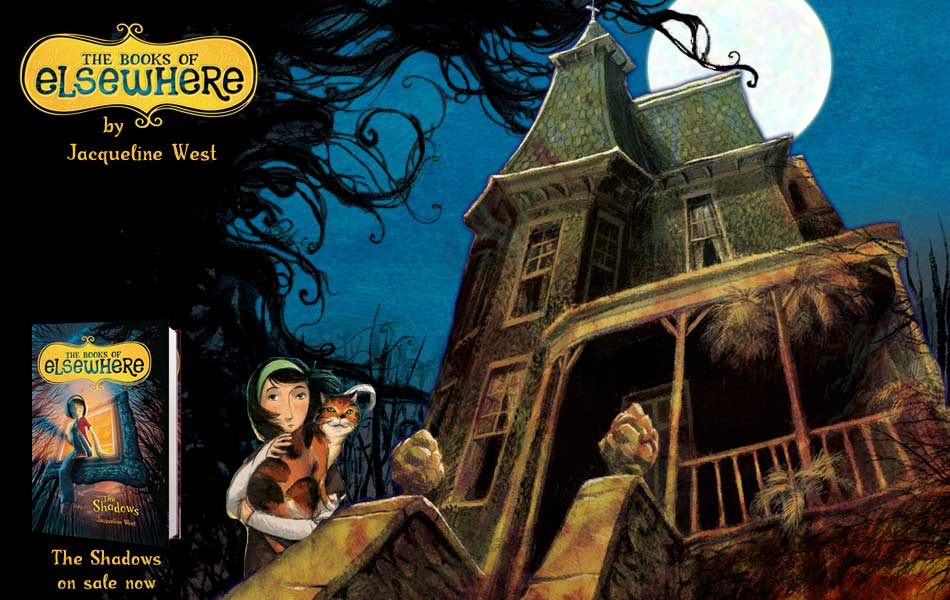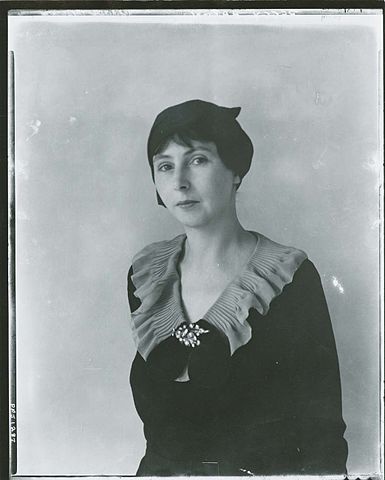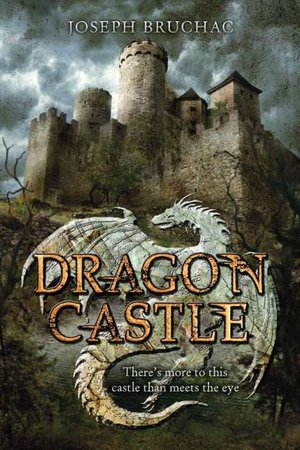 Spellbound, the second volume of The Books of Elsewhere by Jacqueline West (Dial, 2011) picks up right where The Shadows left off, with eleven-year-old Olive stuck outside the magical paintings in the McMartin house, and what's worse, her friend Morton stuck inside them. The cats (especially Horatio) are reluctant to help Olive--in fact, they're actively discouraging her. But when her new neighbor Rutherford suggests she look for the McMartins' spellbook, Olive is somehow inexorably drawn to it (that's it in the painting on the cover). Can she use the spellbook to help Morton escape Elsewhere, or is it using her to help the McMartins do the same?
Spellbound, the second volume of The Books of Elsewhere by Jacqueline West (Dial, 2011) picks up right where The Shadows left off, with eleven-year-old Olive stuck outside the magical paintings in the McMartin house, and what's worse, her friend Morton stuck inside them. The cats (especially Horatio) are reluctant to help Olive--in fact, they're actively discouraging her. But when her new neighbor Rutherford suggests she look for the McMartins' spellbook, Olive is somehow inexorably drawn to it (that's it in the painting on the cover). Can she use the spellbook to help Morton escape Elsewhere, or is it using her to help the McMartins do the same?
I loved The Shadows, which won a Cybil award last year; and Spellbound might be even better, in that there is more of everything to love and some new things besides. Olive continues to explore the old stone Victorian on Linden Street (which West says looks almost exactly like the LeDuc House in Hastings, MN): the library, the attic, the basement (sorry, Leopold!), and the garden, as well as some previously undiscovered paintings.

Spellbound also introduces a new character in the gallant yet rumpled Rutherford, and revisits Morton, whose plight is increasingly poignant (spoiler alert: he's still stuck inside his painting). Olive herself does some devastating things while under the spell of the spellbook--even the cats abandon her at one point--but ultimately faces up to Annabel McMartin and the mysterious Mrs. Nivens. Not for the last time, though: now Olive is more determined than ever to rescue Morton...and Annabel is on the loose.
I read an ARC of Spellbound (thank you, Penguin!) with cover art and fantastic black-and-white interior illustrations by Poly Bernatene, who also did the illustrations for The Shadows. I wish all my favorite middle grade novels had illustrations as perfect for them as these, actually--they add so much atmosphere. Spellbound will be out in hardcover on July 12, and I'm already looking forward to Volume 3.

A note about the author: When asked what paintings she might sneak into if she got her hands on Olive's glasses, Jacqueline West said she'd have to go with Salvador Dali's, "because they would be such amazing worlds to explore. I imagine everything would feel rubbery and slick, sort of like Silly Putty or fried eggs." I would pick Vermeer, because of the order and light. What about you?

 The exhibition focuses on Bacon's connections to people in the art world, but I wonder if we could do the same thing for children's books? Bacon herself illustrated books by everyone from Lloyd Alexander (My Five Tigers: The cats in my life; Thomas Y. Crowell, 1956) to Betsy Byars (Rama the Gypsy Cat; Viking, 1966--I still have my childhood copy of this one, fortunately). She seems to have been the go-to illustrator for cats in the 1950s and 60s, and a fascinating person besides. More Peggy Bacon, please!
The exhibition focuses on Bacon's connections to people in the art world, but I wonder if we could do the same thing for children's books? Bacon herself illustrated books by everyone from Lloyd Alexander (My Five Tigers: The cats in my life; Thomas Y. Crowell, 1956) to Betsy Byars (Rama the Gypsy Cat; Viking, 1966--I still have my childhood copy of this one, fortunately). She seems to have been the go-to illustrator for cats in the 1950s and 60s, and a fascinating person besides. More Peggy Bacon, please!



